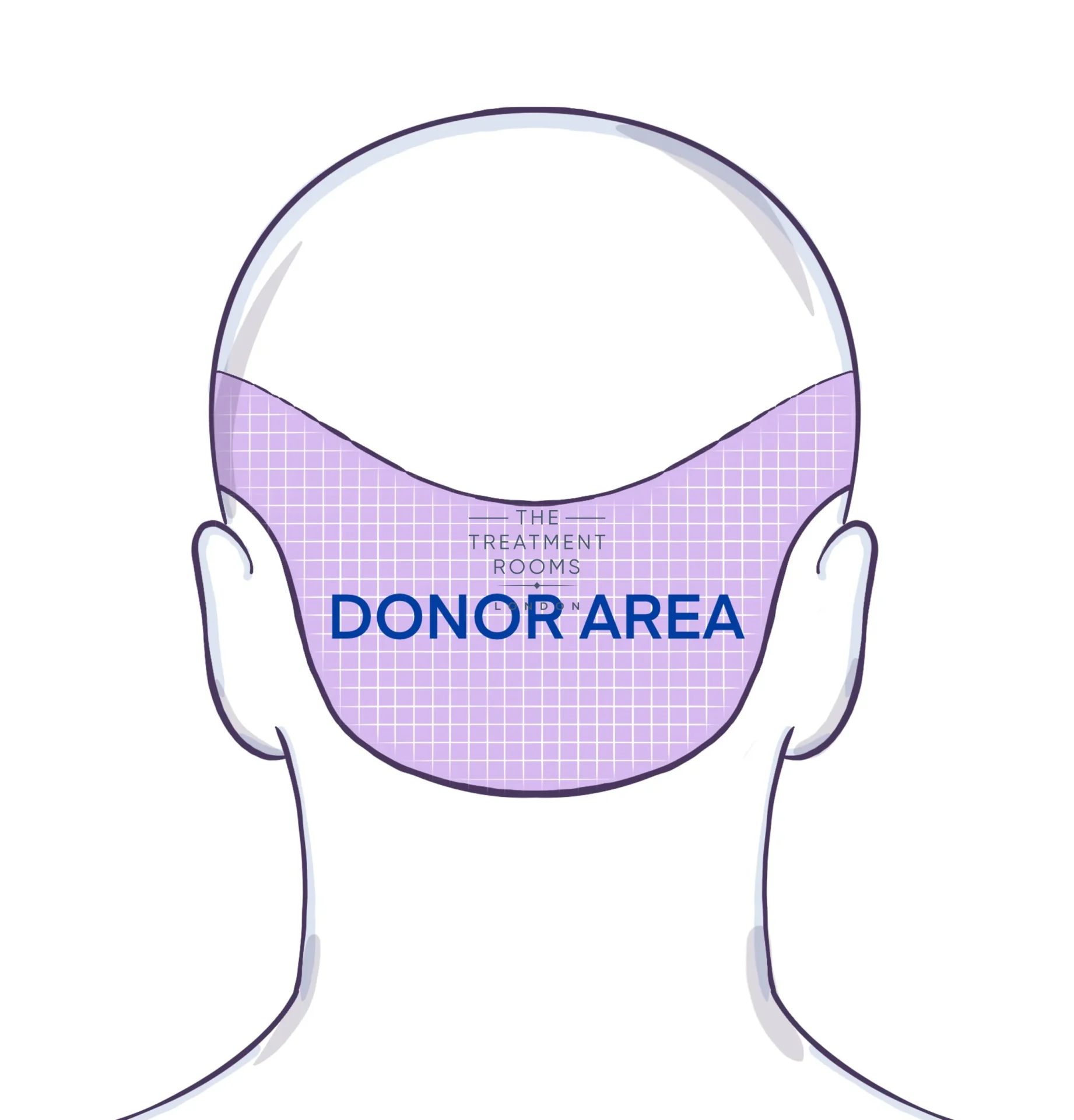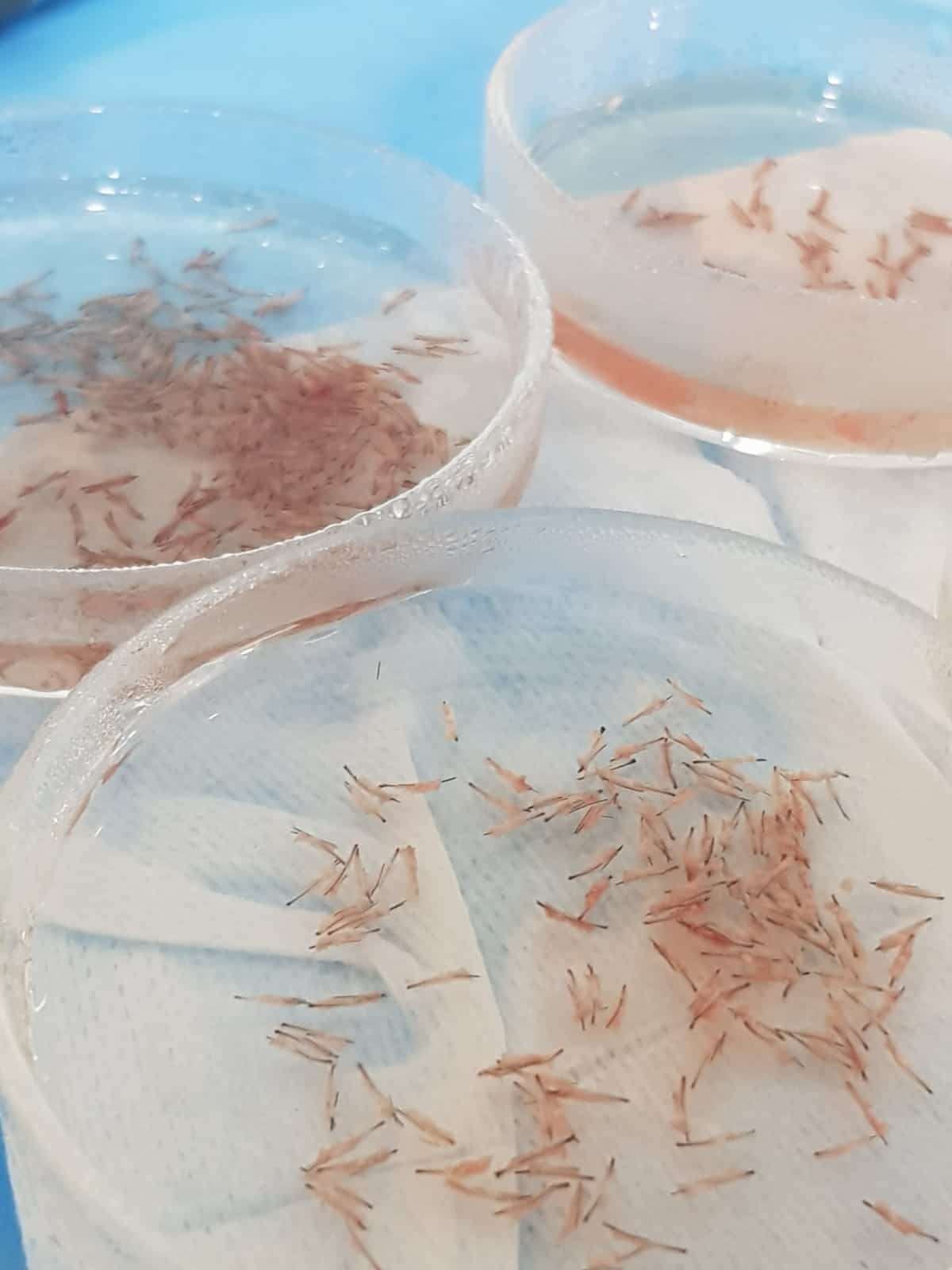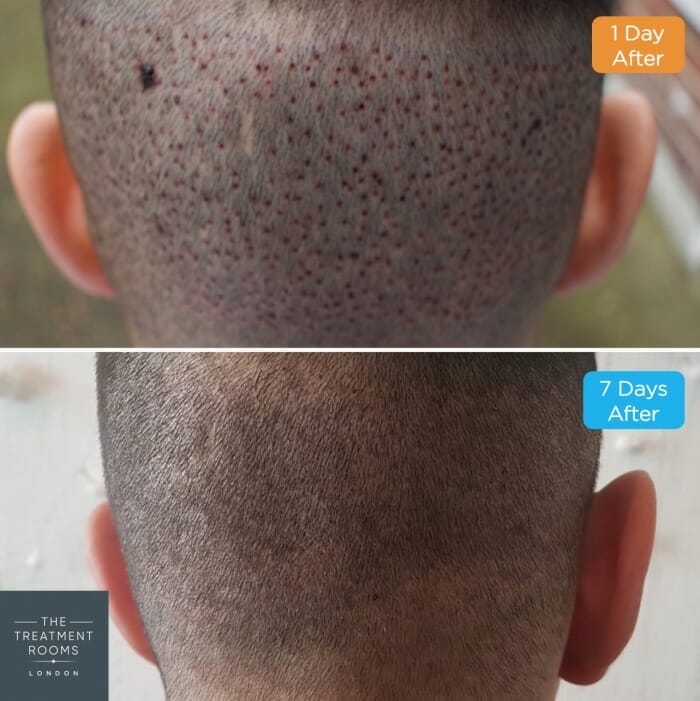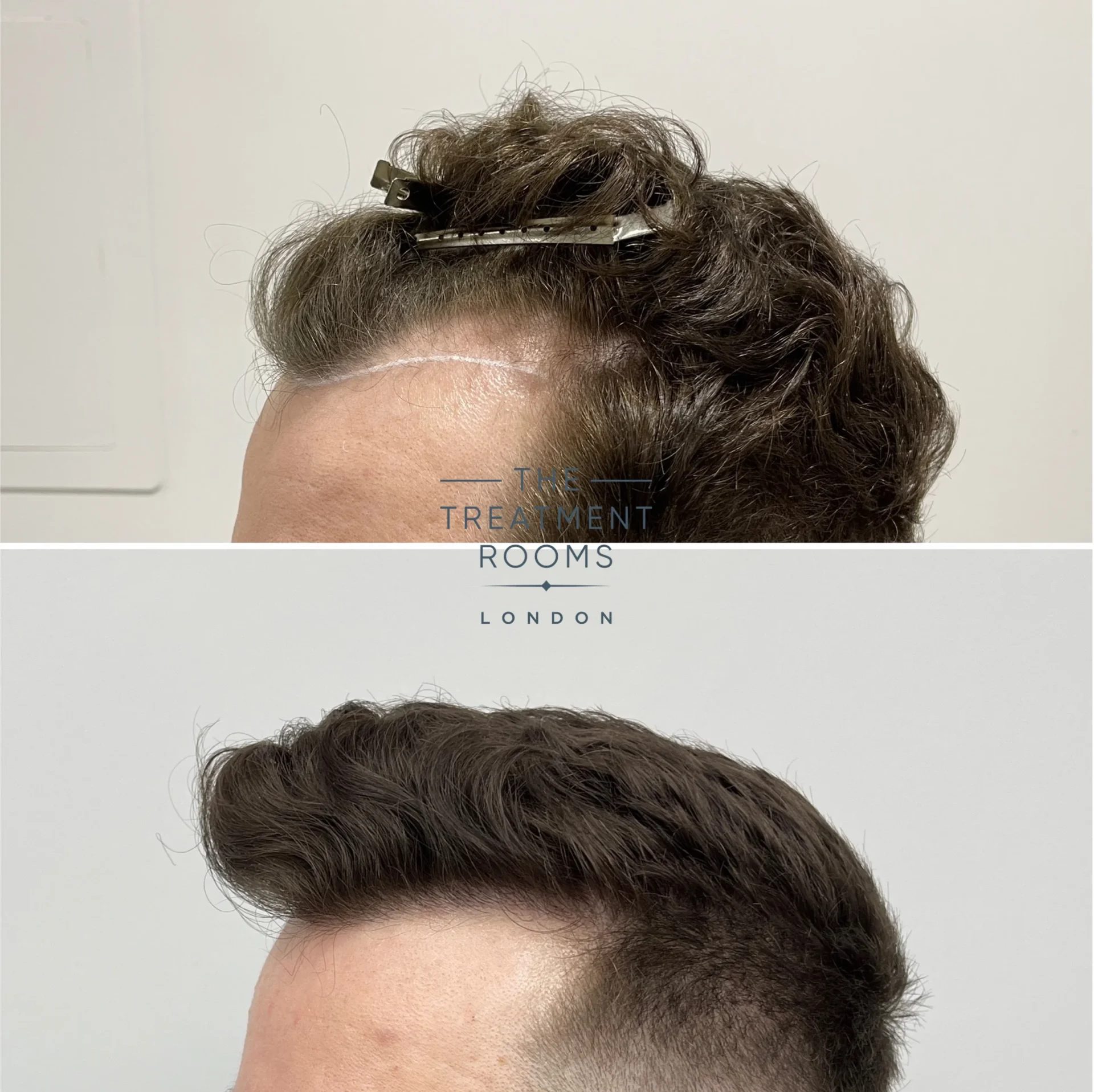Your donor area is the region at the back and sides of your head that are used to "donate" hair to your recipient area in a hair transplant.
Your surgeon will make small incisions around each follicle and take them out one by one. These incisions heal quickly. On average, it takes 5-7 days for your donor area to heal after your FUE hair transplant as you will see in the pictures below:

The above picture shows a gentleman after he has had 2200 grafts extracted on the day of his surgery (D1), the day after his surgery (D2) and on day 7 following his surgery (D7). His donor area has healed fully and his remaining hair has grown to conceal the area that has been operated on.
In this guide, we will give you some examples of how our patient's donor area heals after hair transplant surgery and what you need to be aware of.
What Is The Donor Area?
The donor area is typically the area on the back and sides of the head where a hair transplant surgeon harvests follicles from. This involves taking hairs from one by one (FUE hair transplant surgery) or as a strip (FUT hair transplant surgery) from the donor area and relocating these hairs to an area of balding or thinning (recipient area).
The donor region is outlined in purple in the diagram below. It is an area of hair at the back and sides not affected by the balding process.

The hairs taken from a donor area are normally hairs resistant to the balding process. When they are relocated to an area of balding or thinning, they retain this resistance and grow normally.

Hair follicles extracted from the donor area
Donor Area Healing After A Hair Transplant
The healing process following a hair transplant starts immediately. The small incisions will initially scab over. On the day of your surgery you will be given a bandage for the back of your head. You can remove this the next day where you will find the back of your head has small scabs where follicles have been taken.
These scabs begin to fade away immediately after surgery when you wash the back of your head. Underneath the scab your body will begin to repair and cover the small incisions with small scar tissue. This scar tissue should be between 0.7mm-1mm in size spread out throughout your donor area. As each small dot is very small, once your hair grows to a length 1 or 2, they should be unnoticeable.

Waiting For Your Donor Area To Heal Before Going Back To Work
You can see in the picture above by 7 days following surgery the donor area has completely healed and you can return to work should you wish to do so.
Cutting Your Hair After Your Donor Area Has Healed
You can cut your hair as normal after you have passed day 14 following your hair transplant. Your donor area should have healed fully following surgery by this point, provided you have followed our FUE aftercare and recovery guidelines.
Redness In Your Donor Area After A Hair Transplant
After your hair transplant your donor area may look a little red. This is in keeping with the normal healing process and becomes unnoticeable once your hair grows to a certain length.
If this redness persists for more than 4 weeks then you should contact your Surgeon to have the area evaluated.
Can You Transplant From Another Donor Area For A Hair Transplant?
You can't transplant hair from another person or donor as the transplanted hair will be rejected by your immune system.
You can transplant hair from another area of your face or body like your beard, armpit, chest or limb into your scalp. This is particularly beneficial in patients who have a limited amount of hair in the traditional donor area located across the back and sides of the scalp.
Donor Area Scars After A Hair Transplant
After your donor area has recovered and healed following surgery, you'll be left with small "dot-like" scars spread across the back and sides of your scalp where hairs have been taken out. These are concealed when your hair grows. By keeping your hair a minimum length of 1-2 these scars should not be visible. Take a look at the video below which takes you through a some examples of our patients after surgery.
Are you looking to have a hair transplant?
To gain a better understanding of the amazing results our hair surgeons have provided over the years, visit our FUE hair transplant before and after page. Alternatively, if you're interested in understanding how much a hair transplant will cost, take a look at our hair transplant cost page for more information. Our hair graft calculator will also give you an indication as to how many grafts you will need.
Get in touch if you are looking to have a hair transplant and you are still wondering about when you can go back to work. Our Surgeons would be happy to go through your treatment options and explain when would be the best time for you to go back to work. Enquire today to find out more.
Authored by
Reviewed by
FUE HAIR TRANSPLANT REVIEWS
Latest News
Can A Hair Transplant Fix A Widow’s Peak?
February 24, 2025
A hair transplant can flatten and fix a widow’s peak by restoring hair either side into the…
Does Caffeine Shampoo Work For Hair Loss?
March 30, 2022
Shampoo containing caffeine is marketed and sold by several brands – including Alpecin, TruePure and Ultrax Labs…
Can I Dye My Hair After Hair Transplant Surgery?
February 28, 2022
When can you colour your hair after having a hair transplant? It is advisable to wait at…
Book A Consultation







